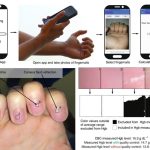
New Metric for Vascular Pulsatility in the Brain: A Revolutionary Tool for Understanding Neurological Diseases
Introduction
A recent study published in the Scientific Reports – Nature has introduced a new metric for measuring the pulsatility of blood through brain vessels. The study highlights the importance of measuring pulsatility to distribute oxygen and nutrients evenly across different areas of the brain, ensuring proper function. This revolutionary technique, based on 4D flow MRI technology, can provide healthcare practitioners with a comprehensive measure of the risk associated with high pulsatility in small brain vessels. A higher vascular pulsatility has been strongly linked to various brain conditions, including Alzheimer’s disease and dementia, making this new metric a valuable tool for understanding disease mechanisms and potentially developing new treatments.
Limitations of Traditional MRI Methods
Traditional MRI methods face limitations when measuring vascular pulsatility due to anatomical variations and measurement constraints. This new technique overcomes these challenges by integrating thousands of measurements across all brain vessels, providing a more comprehensive and representative metric for the entire brain. In practical terms, this ability to accurately measure how pulsatility is transmitted through the brain’s arteries has the potential to revolutionize approaches to neurological diseases and support research on vascular damage hypotheses.
Accurately Assessing Brain’s Vascular Health
The metric provided by 4D flow MRI technology can allow for an accurate assessment of the brain’s vascular health. Neurodegenerative disorders frequently cause substantial damage to the brain’s vascular system, affecting proper functioning. By measuring and assessing pulsatility, healthcare practitioners will have additional insight into potential risk factors and avenues for treatment. This new technique provides a detailed assessment of small blood vessels in the brain, which often cannot be done with traditional MRI scans of the brain.
How the Metric Can Revolutionize Diagnoses & Care
Integrating this new metric into routine diagnostic procedures will enable healthcare providers to offer more precise and personalized care plans for individuals at risk of or suffering from cognitive impairments. The researchers have also made their tools publicly available by integrating them into pre-existing open-source software. This accessibility will allow scientists and clinicians worldwide to adopt the advanced methodology, promoting further research and collaboration in the field of neurology. This availability will facilitate faster and more efficient diagnosis and care, ultimately improving outcomes and quality of life for patients.
Implications for Further Studies
The study not only has implications for patient care but also for enhancing clinical assessments and research on brain health. The research team has plans for exploring the applications of this technique in larger and more diverse populations, starting with a “Digital Twin Dementia Study” at Mātai. In the initial study of the metric, researchers discovered important sex differences in vascular dynamics, prompting further research focusing on sex-related dynamics. The CAMRI at Mātai and the Centre for Advanced MRI will undertake this research study in November. By continuing to study the applications and implications of this new metric, the research team hopes to advance our understanding of brain health and neurological diseases, ultimately leading to improved diagnoses and treatments for patients.
Conclusion
The new metric for measuring vascular pulsatility in the brain provides a valuable tool for understanding the underlying mechanisms of neurological diseases and potential new treatments. By integrating this innovative technique into diagnostic procedures, healthcare providers can offer more personalized care for individuals with cognitive impairments. The public availability of the tools used in this research promotes further collaboration and research in the field of neurology. The research team’s plans for future studies will continue to explore the applications and implications of this metric, with the ultimate goal of improving diagnoses and treatment outcomes for patients with brain conditions.
Keywords
Vascular Pulsatility, Brain Vessels, 4D flow MRI Technology, Neurological Diseases, Alzheimer’s Disease, Dementia, Diagnosis, Care, Open-Source Software, Clinical, Research, Brain Health, Digital Twin, Mātai, CAMRI, Improved Outcomes, Quality of Life.
Originally Post From https://globeecho.com/a-novel-approach-to-measuring-blood-flow-in-the-brain-for-enhanced-dementia-research/
Read more about this topic at
New metric for blood circulation in brain to
NeuraMetrix: Transforming Neurological Diagnostics with …

